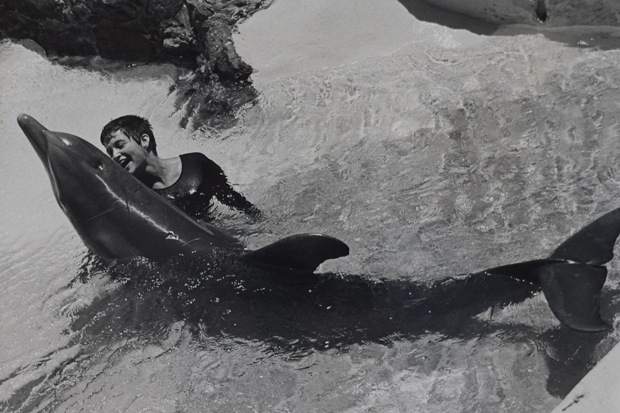BBC4’s The Girl Who Talked to Dolphins (Tuesday) began with the overstated-sounding claim that it would be tackling ‘perhaps the most remarkable period in the history of animal science’. In fact, though, the longer the programme went on, the more convincing this claim felt — even if the word ‘period’ should possibly have been replaced with ‘episode’, and ‘remarkable’ with ‘bonkers’. At times, the story seemed almost too neat a microcosm of the 1960s, as well meant if not necessarily practical ideas about transforming life on earth — and beyond — gave way to something much darker. At others, it brought to mind that hippie Californian scientist in The Fast Show. At no point, however, did it cease to be astonishing.
Like many classic Sixties tales, it had its roots in the 1950s, when John Lilly, an American scientist of impeccable credentials, was studying dolphins in Florida. Then one night in 1957 his wife heard one of them apparently attempting to mimic human speech — a moment that seems to have struck Lilly with the force of a divine revelation. If humans could learn to communicate with another species, the result would be ‘a breakthrough of world-historical significance’. A book outlining his theories became a bestseller in 1961, leading to an appearance on The Tonight Show where host Jack Paar obligingly assured the audience that ‘this is not some nut, this is a scientist’.
Meanwhile, hearing of Lilly’s ideas, some of the people involved in the US space programme realised that the ability to talk to other species would also come in handy if we ever made contact with extra-terrestrials. As a result, he was given enough funds to build and staff a dolphin communication lab in the Virgin Islands. And at this stage things took a turn for the weird.
Having shown up at the lab uninvited, Margaret Howe, a 22-year-old college drop-out, so impressed Lilly with her enthusiasm for his dolphins that she was given the crucial role of teaching them English. He also agreed to her subsequent plan of flooding every room in the place and living there alone with her favourite dolphin, Peter.
Faced with such material — and what happened next — many documentaries might have spent quite a lot of time hammering us over the head with how sensational it all was. On the whole, this one was wise enough to let us spot that for ourselves, while it got on with telling the story as straightforwardly as possible. And in this it scored two big coups. The first was playing Margaret’s previously unheard recordings of Peter’s TEFL classes — where, sad to say, he only ever seemed to be mimicking her inflections, with no more understanding, and considerably less clarity, than the average parrot. (Basically, he sounded like a dolphin.) The second was the only interview she’s ever given.
Margaret proved impressively loyal to her former pupil, arguing that if they’d had longer together, he might well have cracked human speech. Nor, despite her grandmotherly demeanour, did she make any bones about what less scrupulous film-makers (or a less scrupulous channel) might have made the subject of the entire programme: the fact that she and Peter had a sexual relationship. After a while as just good friends, he’d started rubbing himself against her and she ‘decided to relieve his desires manually’. ‘It was very precious, very gentle,’ she explained with a wistfulness that was somehow less creepy than you’d expect. ‘Sexual on his part. Not sexual on mine. Sensuous perhaps.’
But things, unfortunately, didn’t end well. One reason Peter and Margaret were left to it was that Lilly had become fascinated by the mind-expanding possibilities of LSD and begun ‘experimenting on himself’ — or in layman’s terms, taking a load of drugs. On a rare visit, he even gave some LSD to the dolphins (although, at Margaret’s insistence, not Peter) in a bid to… well, who knows?
Not surprisingly, the funding was soon drying up, and Margaret and Peter were forced to go their separate ways. (As she unarguably put it, ‘I couldn’t keep him and we couldn’t elope into the sea.’) And so after one ‘very special’ last night together, Peter was taken to another of Lilly’s labs in Florida where, according to the vet, his cause of death not long afterwards was suicide — which dolphins can commit by the simple method of choosing not to breathe any more.
And with that, Lilly headed into full-blown hippiedom, turning up on television in a Davy Crockett hat to tell the nation ‘whatever you believe in the province of the mind is true, or becomes true within certain limits’. For her part, Margaret went on to get married — ‘to a human being’, she emphasised — and to have three daughters. But, as she made touchingly clear, she’ll never forget Peter.






Comments